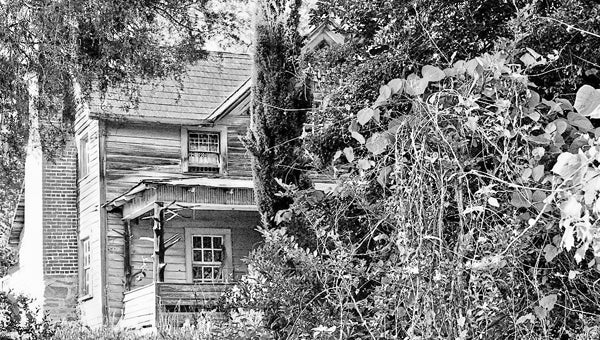Beware the abandoned house…it may be ‘hainted’
Published 7:03 pm Tuesday, January 8, 2013
Southern Appalachian mountain people in the Dark Corner have delighted in telling and retelling stories to their children and grandchildren. Favorite ones were about ghosts, ‘haints’ and witches that family members or friends and neighbors had seen or heard around old, abandoned houses or churches, graveyards, mountain tops, little-used roads or trails.
Hundreds of years ago, ancestors of these mountain people told similar stories to their family members about ghosts seen in or about old homes in Scotland, Northern Ireland and England. Many of these old homes had a double cross panel on the front door. This was supposed to guard the house from any witch that sought to enter. It was called a witch door.
In my boyhood, there was a sense of awe, and fear, by both old and young of older, abandoned houses where no one had lived for years. This was especially true if the house was covered with vines, tall weeds and brush that half concealed broken windows, doors or shutters.
Both old and young took great pains to avoid such places after sundown.
Before rural electrification came to the Dark Corner, the only illumination of these old homes were tallow candles, pine torches, a fire in the fireplace, oil lamps or lanterns, or flashlights with batteries. Such poor illumination furnished many shadows that could hide ghosts or ‘haints.’
Weapons, such as axes, knives or guns were worthless in a battle with some supernatural thing that reached out of the dark shadows and touched with cold, ghostly fingers those who were fools enough to be found in such a situation after dark.
The only thing to do if you found yourself in the vicinity of a ‘hainted’ house or place after sundown was to break all speed limits running away from it.
When I was 13 years old, an especially superstitious 50-year-old neighbor wanted to visit his brother, who lived a mile away, after sundown. He offered to pay me 50 cents to walk one-tenth of a mile with him past the intersection where a man had been killed many years earlier.
“There’s nothing to be afraid of, Jess,” I said. “Stud Howard (the man who was killed) can’t hurt you.”
“No, sir, Mister Dean, but he might make me hurt myself!”
I didn’t go. Neither did he.
A more dreaded place than an old house was an old family or public graveyard. The dread was felt when nearing an old, abandoned church building that might stand near the graves.
It was believed by many mountain people that cattle, horses and mules, with a keen sense of smell, might detect a hidden ghost. This notion may have come down from days of trouble with renegade Cherokees and Tories. There have been numerous accounts of cattle giving the pioneers warning that Indians were in the neighborhood.
Hunters, when seeking ‘possums, raccoons or foxes at night, avoided ‘hainted’ houses, since their hound dogs were not supposed to see or smell a ghost that might look out of an old window, or be hiding in the brush and vines around the old house.
The prevalent maxim became “if it’s old and abandoned…beware!”






